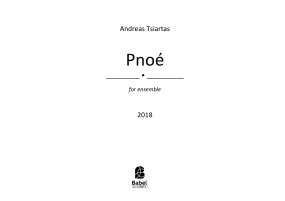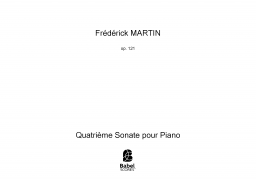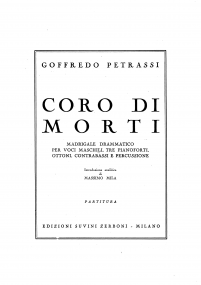. . . nothing but a string of songs.
ISMN : 979-0-2325-5320-7
- Login to create your own lists
“Any memory of those days is nothing but a string of songs.”
–Dancer from the Dance, 39
. . . nothing but a string of songs comprises a pair of pieces that adumbrate the notions of “étude” and “transcription” in translating passages from Andrew Holleran’s 1978 cult gay novel Dancer from the Dance into music. The constitutive element of the Twelfth Floor/disco in alt is the fixed electronic component, to which the piano reacts “live” with the virtuosity traditionally characteristic of études. In this piece, the tape part “transcribes” the literary text by intercutting between two musical references that constitute key elements within it: Curtis Mayfield’s 1972 single “Make me believe in you,” sung by vocalist Patti Jo—a song first heard by the narrator at the Twelfth Floor, a favored dance spot of the New York gay demimonde portrayed in the novel, and the mad scene from Vincenzo Bellini’s opera I Puritani, in a live Metropolitan Opera broadcast from 1976 starring soprano Joan Sutherland—who lends her name to the character of the speed-addicted drag queen Sutherland as well as, in the moment from the novel that caps the piece, her trademark E-flat in alt.
Taking the first part of its title from a phrase repeatedly used to describe the novel’s sex symbol protagonist Malone, prisoner of love/transfigured broadens the scope of reference in using sound from the final sequence to the 1946 film Humoresque, where Franz Waxman’s Fantasy on Tristan and Isolde plays as actress Joan Crawford—like Malone at the end of the novel—walks off the Long Island beach into the Atlantic Ocean for good. The electronic part’s more allusive relationship to the novel is reflected in a freer division of roles between piano and tape, with the piano at one point even “cutting in” to the tape to play Franz Liszt’s transcription of the Liebestod from Richard Wagner’s opera. The piece’s nature as an étude concomitantly becomes more flexibly defined to encompass a study of the piano’s harmonic and resonant properties at the softest dynamic levels.
6 December 2019
Pages - 20











